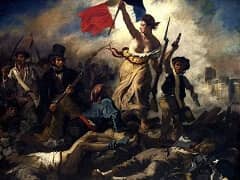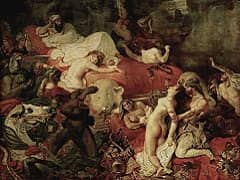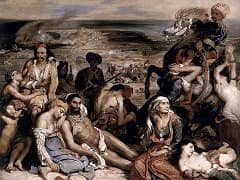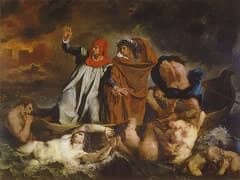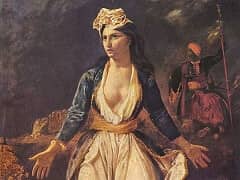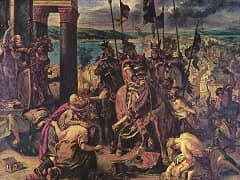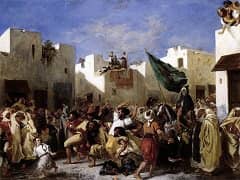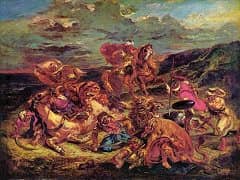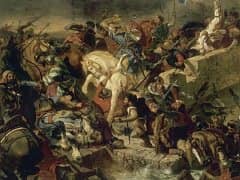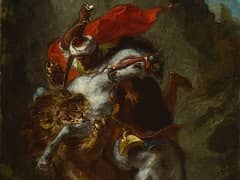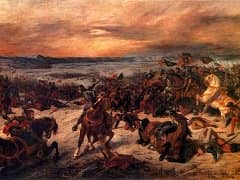The Justice of Trajan by Eugene Delacroix
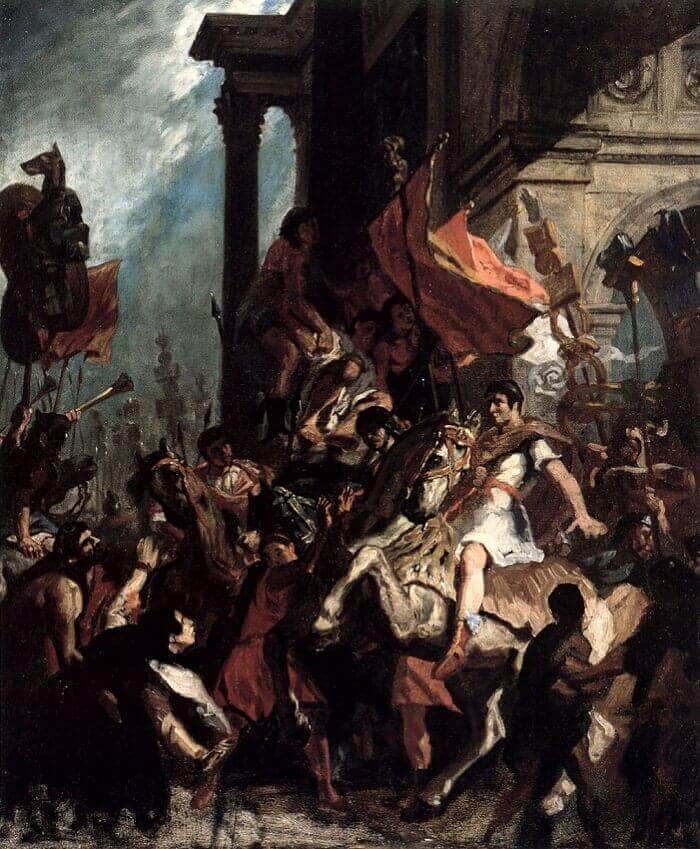
Some ten years after The Barque of Dante, Delacroix returned to the Divine Comedy for his inspiration: the subject of The Justice of Trajan is taken from the Purgatory, Canto X.
This very large composition is entirely imbued with a Classical rhythm which coordinates the groups and disposes the masses; the balance of the construction is not without similarity to Poussin's Massacre of the Innocents. But the Venetians were also in part responsible for the formation of Delacroix and the noble architectural background is reminiscent of Veronese. Also Venetian is the vibrant light of the shimmering sky, contrasting with the foreground tones, whose somberness is perfectly in keeping with the tragedy of the scene.
In the admirable group of Trajan on horseback and the woman kneeling before him and demanding vengeance for the death of her son, Delacroix has captured with rare expressive power a flight of movement by fixing it in its eternity.

